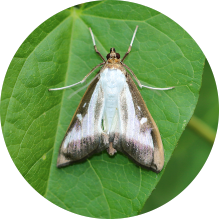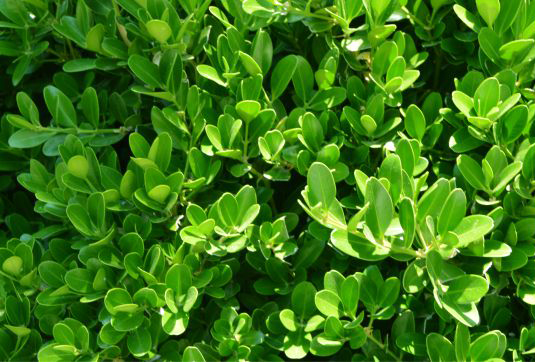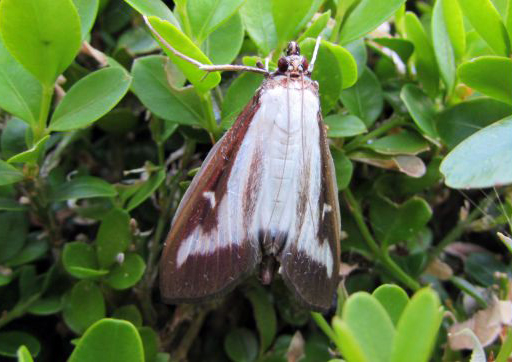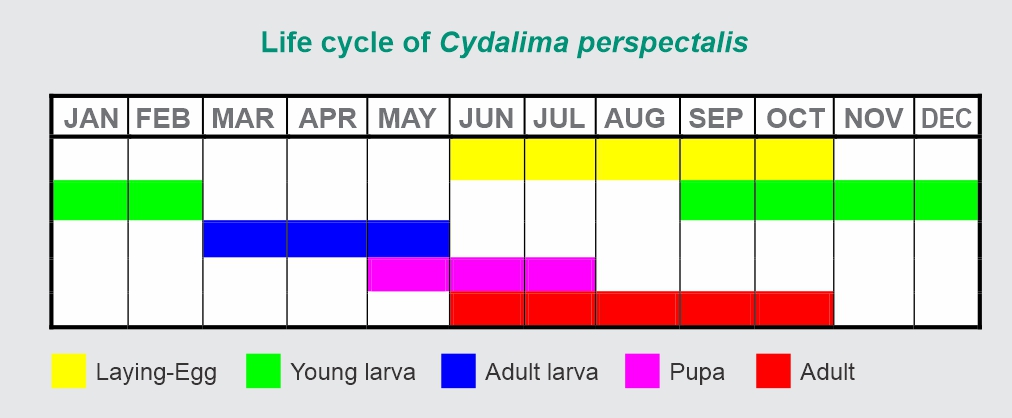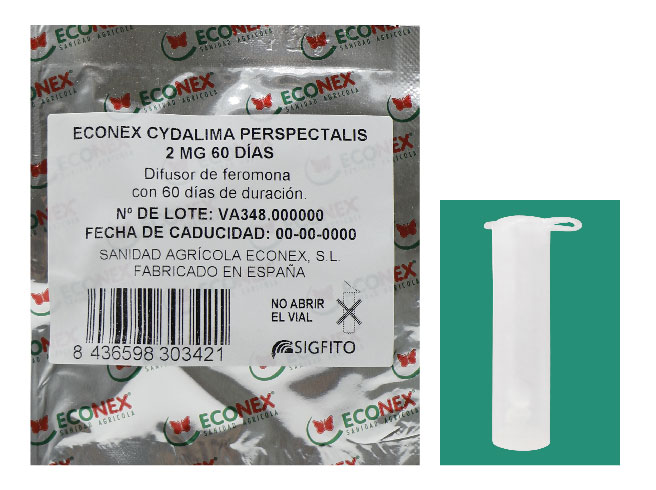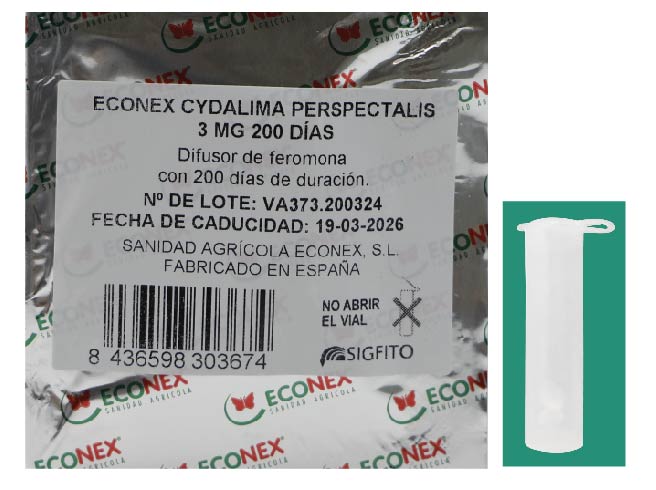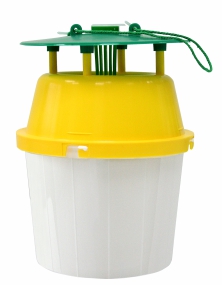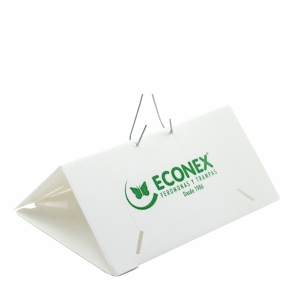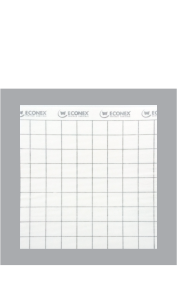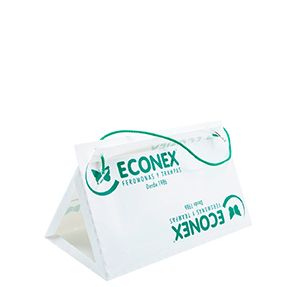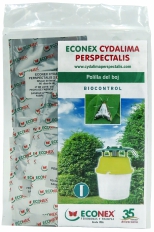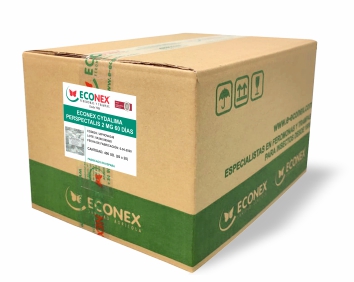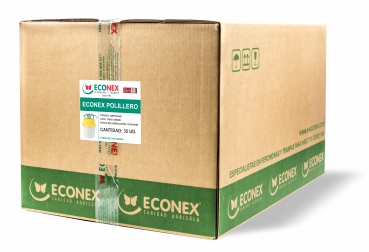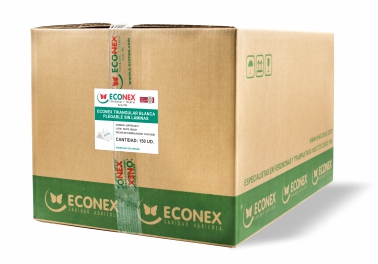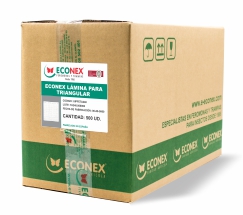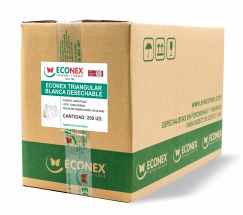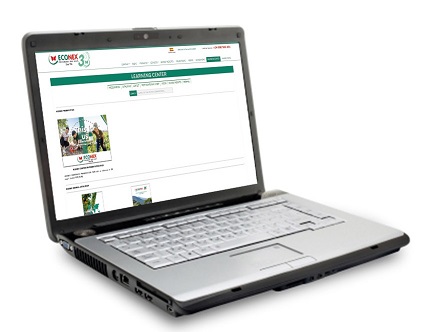Morphology and biology
The adults have an approximate wingspan of 4 cm. They have a white body except for the head and the last segment of the abdomen, which are brown.
The wings are white and slightly iridescent with a dark brown band on the outer margin and a characteristic white dot on the back of the wing.
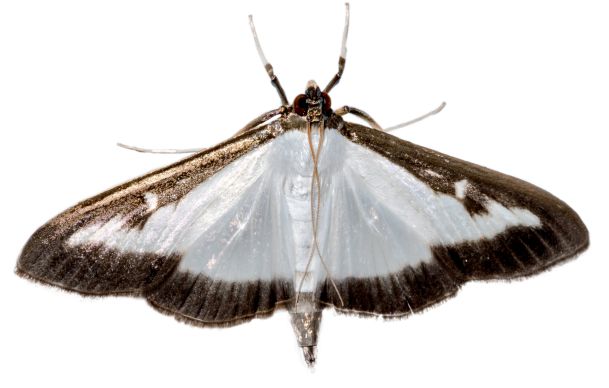
Cydalima perspectalis adult
The eggs are laid in groups of 10 to 30 eggs. These are deposited on the underside of the leaves, covered with a mucilaginous substance. The eggs are round with an approximate diameter of 0,8-1 mm.
Initially, they are a pale yellow colour and then later show a black spot corresponding to the cephalic capsule of the larva.
At birth, the larvae measure 1-2 mm, reaching 35-44 mm at the end of their development. The head is black, shiny and the body is green.
On the dorsal side the body, they have two lines of black stripes bordered by a thin white stripe and large black dots outlined in white in all segments. The larvae have hair all over their bodies.
The larvae also prefer to feed on the most mature leaves. When the population density is very high, the larvae can cause total defoliation of the box plant.
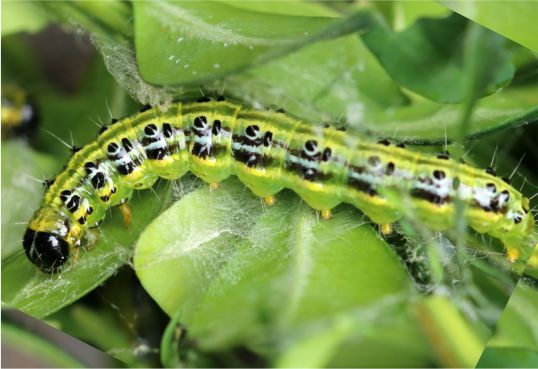
Cydalima perspectalis larva
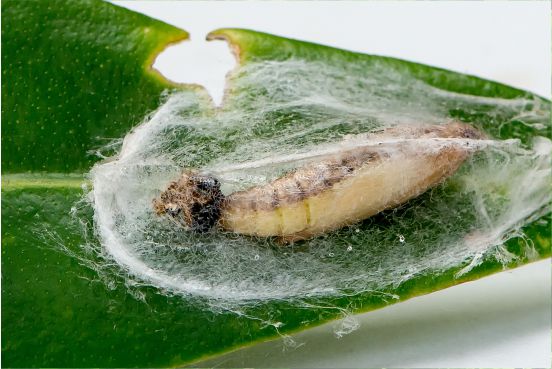
Cydalima perspectalis pupa
The young caterpillars hibernate by placing themselves between two leaves joined together by silk webbing, continuing their attack in Spring.
The pupae measure between 1,5 and 2 cm long. The pupal phase lasts between 10 and 14 days. The flight period generally occurs between the end of May and beginning of June.
Flight also happens at night with Cydalima perspectalis displaying positive phototropism, because they are attracted to sources of light.
The number of generations can vary between 1 and 4 annually, depending mainly on the temperature.
Source: Gobierno de Navarra. Servicio de Conservación de la Biodiversidad. Sección de Gestión Forestal.
Damage
The box tree moth attacks all species of the Buxus genus (Buxus sempervirens, Buxus microphylla, Buxus sinica, Buxus colchicum).
The most visible damage is caused by the larvae on the leaves. When feeding they cause severe defoliation which, amongst other consequences, limit photosynthetic capacity.
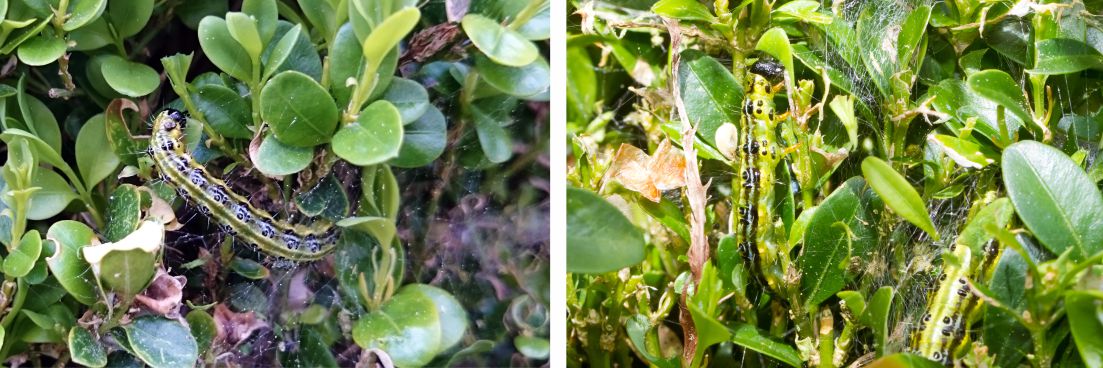
Cydalima perspectalis caterpillar feeding on a box tree shrub
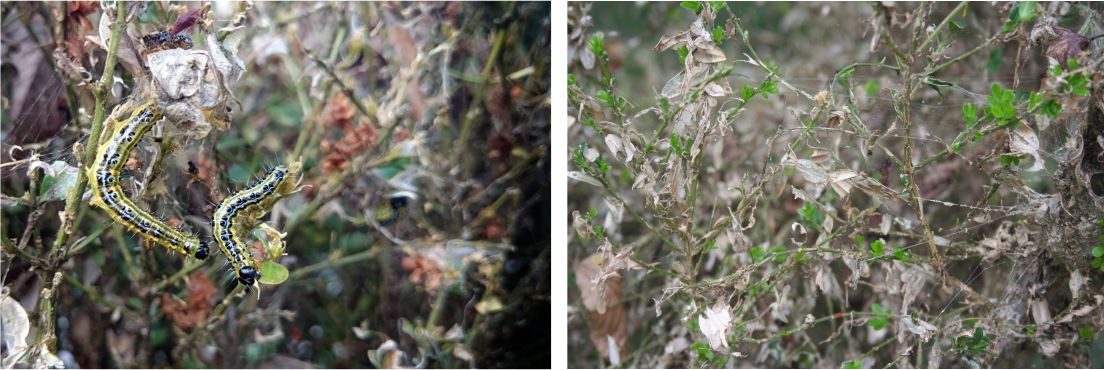
Box tree shrubs defoliated by an attack from Cydalima perspectalis caterpillars
However, the most serious damage seems to stem from its attack on the bark, which can lead to the drying up and death of the plant.
The first generation of insects is the one that causes the least damage, the second or later generations are the ones that cause the plants to dry out.
Source: Gobierno de Navarra. Servicio de Conservación de la Biodiversidad. Sección de Gestión Forestal.
Period of use
To obtain good control of Cydalima perspectalis, it is advisable to combine two methods: detection and monitoring, then mass trapping.
In late May to early June, 1 to 3 traps per hectare should be placed for the detection of the pest and observation of its population levels.
With tolerance thresholds established in each area, the moment to adopt control measures; in this case mass trapping is then defined. The tolerance threshold for Cydalima perspectalis is very low and varies depending on the area.
In general, is it approximately 3 captures per trap and per week.
This is the moment in which we recommend placing traps throughout the plot for mass capture.
